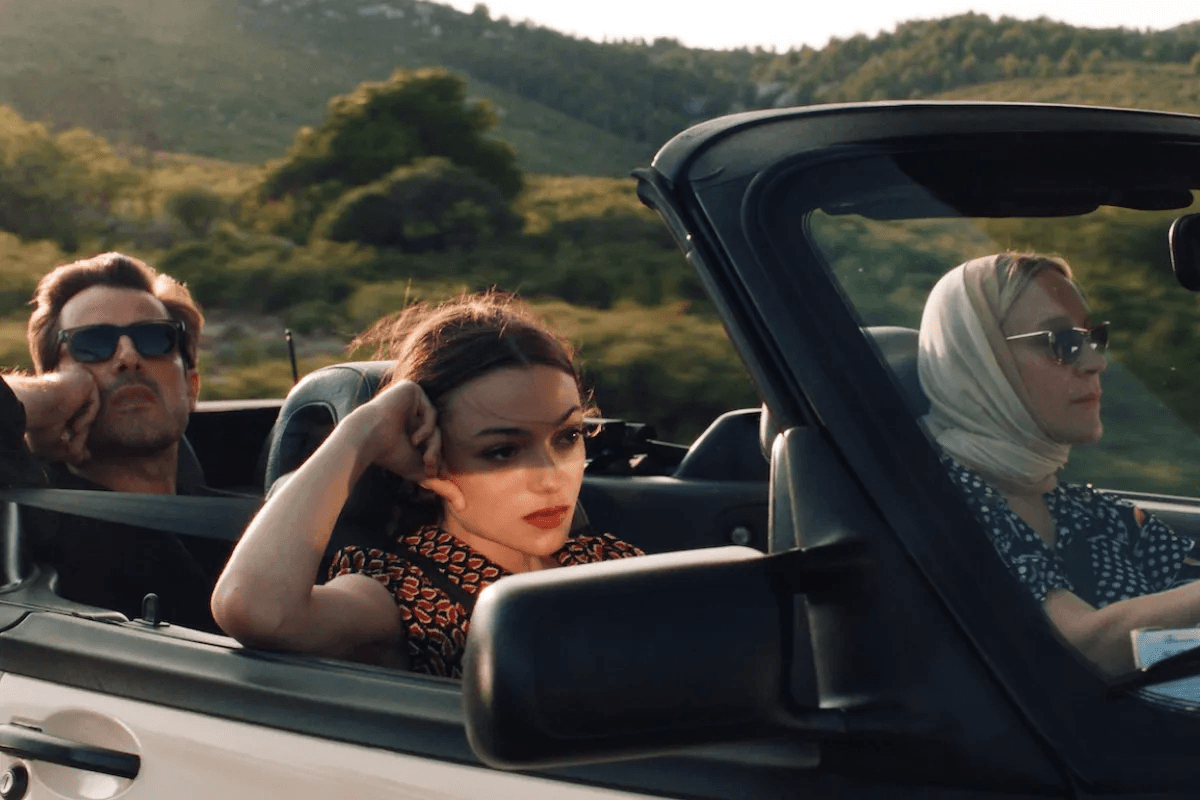Museum of the Moving Image’s ‘First Look’ Series Showcases a ‘Wide Spectrum of Forms and Practices’
A series of concomitant presentations titled ‘Working On It’ will be held, wherein filmmakers will discuss projects that are in production, many of which touch upon topics that are bound to raise hackles.

Fun fact, or at least fun for those enamored of international cinema: The writer Durga Chew-Bose was named after a character in Satyajit Ray’s seminal film, “Pather Panchali” (1955). Durga, you may recall, was the older sister of the movie’s central character, Apu; a spritely young girl, she meets an early fate upon falling ill after a liberating rain storm.
Ms. Chew-Bose has wondered if her parents chose the name less for the character than the actress, Uma Das Gupta: her performance is “not just moving but connective. She romances you.”
The Canadian-born Ms. Chew-Bose has been pegged by media sources as “a leading voice in the millennial intelligentsia … [who] merges the political, personal, and aesthetic into a panoramic account of contemporary life.” Now the author can add “filmmaker” to her CV with “Bonjour Tristesse,” an adaptation of the 1954 Françoise Sagan novel. Ms. Chew-Bose’s film will be having its American premiere at the Museum of the Moving Image as part of its annual “First Look” series.
Over the course of five days, MoMI will be featuring close to two-dozen feature films and short subjects that offer, pace the museum’s senior curator of film and “First Look” artistic director, Eric Hynes, a “wide spectrum of forms and practices.”
A series of concomitant presentations titled “Working On It” will be held, wherein filmmakers will discuss projects that are in production, many of which touch upon topics that are bound to raise hackles and, perhaps, picket lines; these include pedophilia, Germany’s “libidinal unconscious,” the Israeli-Palestinian conflict as seen through the eyes of Swedish newscasters, and “queer and feminist legacies of failure.”
Those who rue the politicization of art will want to tread cautiously through “First Look 2025,” which isn’t to say that art can’t be informed by political content. Iva Radivojevic’s “When the Phone Rang” is a 73-minute communing of fact and fiction, a declarative meditation on war as seen through the eyes of an 11-year-old girl.
The setting is an unnamed Yugoslavia circa 1992. The story is told through a voiceover by Slavica Bajceta that is, by turns, distanced in tone and conspiratorial in demeanor. What you’ll remember about Ms. Radivojevic’s dour film is the employment of debilitated architecture as a metaphor for displacement, and the moments in which it captures the fleeting confusions and rare joys of adolescence.
Giovanni Tortorici’s “Diciannove” is another coming-of-age story, this time with a college-age boy from Palermo. Petulant doesn’t begin to describe Leonardo (Manfredi Marini), who first travels to London in order to study business and then shifts gears, heads back to Italy, and majors in literature at a Siena “uni.”
Youth is wasted on the young, but the beauty of Siena is not lost upon our protagonist, especially given how Mr. Tortorici’s camera gives us an on-the-ground tour of its streets and surrounding landscape. Leonardo engages in a series of ill-advised adventures but is surprisingly conservative in his tastes — at one moment, he disparages the entire literary output of the 20th century.
“Diciannove” could use serious trimming; inside of it is a better movie waiting to get out. Mr. Tortorici is a first-time director and it shows in his fondness for arty flourishes, an overreliance on zooms, and repetitive longueurs. Maybe he could benefit from attending one of the “Working On It” sessions at MoMI?
“First Look 2025” opens with Ms. Chew-Bose’s film and one suspects its pride-of-place owes something to the star power of Chloë Sevigny and hometown pride for her co-star, Lily McInerny, a LaGuardia High School graduate. As it is, Ms. Sevigny proves distressingly stolid in her portrayal of a fashion designer who has designs upon the widowed father of Ms. McInterny’s character, 18-year-old Cécile. The young actress, in marked contrast, exhibits considerable mettle in a role that perches her between the excitements of adolescence and the burdens of adulthood.
This is the second time the Sagan novel has been translated into film: Oscar Preminger helmed a version back in 1958. A co-founder of Babe Nation Films and one of the producers, Lindsay Tapscott, felt that “the story could be better told through a young female team because Françoise Sagan was 18 when she wrote the book.” Ms. Tapscott will have to advise those of us who haven’t read the book if the talky, epigrammatic dialogue in “Bonjour Tristesse” stems from the original source material or is the handiwork of Ms. Chew-Bose.
“Bonjour Tristesse” bears comparison with the soon-to-be released “Misericordia,” Alain Guiraudie’s disquisition on how a family unit can be upset by outside influence. Would that Ms. Chew-Bose had poached upon Mr. Guiraudie’s gift for casual outrage. Instead, she errs on the side of subtlety, changing the time-frame of the Sagan book but failing to account for concomitant shifts in cultural mores.
There’s much to commend in “Bonjour Tristesse” — Ms. McInerney is worth keeping an eye on, as is cinematographer Maximilian Pitner — but the picture prompts the question: How well has the Preminger movie held up?

